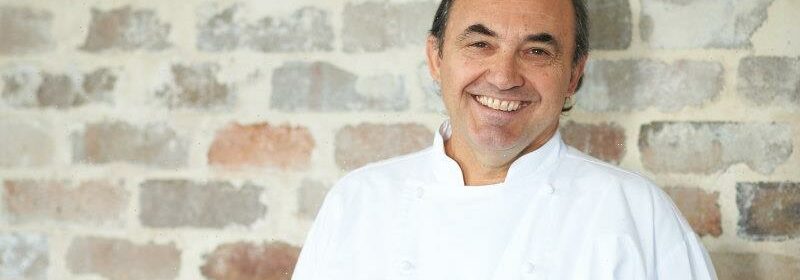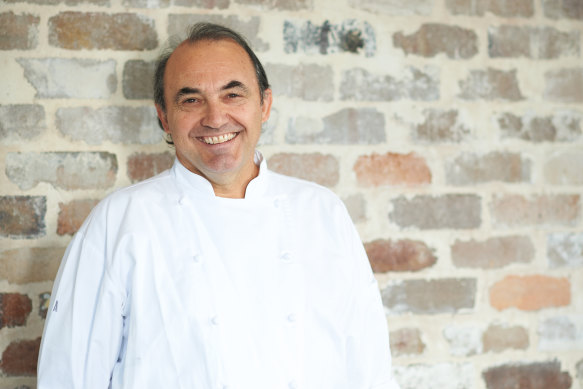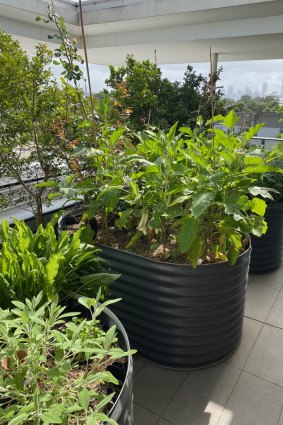How to grow herbs on your small balcony like a famous chef

As you’d expect of a chef with a reputation for caring deeply about the produce he uses, Stefano Manfredi has some hard-to-find ingredients growing in the edible garden thriving on the balcony of his seventh-floor apartment in Sydney’s inner west.
Among the must-haves of basil and parsley, thyme and sage, there is French tarragon (Artemisia dracunculus). “Perfect with lamb,” says Manfredi. French tarragon has a finer leaf and much better flavour than the Russian tarragon, (A. dranuculoides) but doesn’t set viable seed so must be propagated from its spreading rootstock, meaning that what is sold in garden centres as tarragon is usually the coarser, but nursery-friendly, Russian.
Chef Stefano Manfredi is growing food on his small balcony.
There are also five different kinds of eggplant, French sorrel and proper rocket. “Not wild rockets, ever,” insists Manfredi. “I’ve banned that stuff from my restaurants, it tastes like cut grass!”
He credits his father with passing on the gardening bug. “He used to grow all this stuff in his garden at Blacktown and bring it on the train to my restaurants, firstly in Ultimo at Restaurant Manfredi, and then at Bel Mondo.”
Manfredi had a big garden of his own when he ran Manfredi at Bells, at Killcare on the NSW Central Coast. The restaurant sourced a good proportion of its produce from the 500 sq metre garden, resulting in some memorable dishes and The Sydney Morning Herald’s first-ever Good Living Sustainability Award in 2012.
Stefano Manfredi’s balcony garden in his apartment in Sydney.Credit:Robin Powell
Now five oval raised beds, each with a soil depth of about 400mm provide just enough: there’s always something for dinner, and he never buys herbs.
Not knowing exactly what he wanted, beyond a system that would do a good job of looking after itself when he was travelling, Manfredi turned to Steve Batley of Sydney Organic Gardens. Batley specialises in integrated systems for small space gardeners that use permaculture principles to drive their efficiency.
The system Batley set up has worm towers in each bed that take kitchen scraps and small garden cuttings. Manfredi adds sugar cane mulch to keep the mix airy. Worms work their way through it, turning it into highly effective fertiliser. The beds are watered by sprinklers attached to the mains, and from reservoir tanks that collect overflow water rich in worm castings and return it to the beds.
The artichokes and asparagus, both green and purple, stay where they are, but everything else in the beds is continually rotated to keep the soil healthy. Manfredi grows from seed he collects himself or orders from The Italian Gardener, which imports Franchi seeds from Italy.
Growing this much food is not hard to do, he says. “Maintain the soil quality and be aware of what you can grow in different seasons. The garden itself tells you what it needs.”
Make the most of your health, relationships, fitness and nutrition with our Live Well newsletter. Get it in your inbox every Monday.
Most Viewed in Lifestyle
From our partners
Source: Read Full Article

